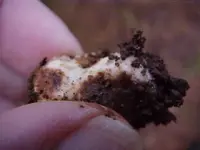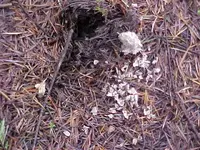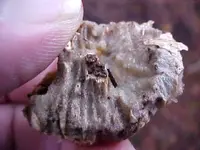Tuberale
Gold Member
- Joined
- May 12, 2010
- Messages
- 5,775
- Reaction score
- 3,452
- Golden Thread
- 0
- Location
- Portland, Oregon
- Detector(s) used
- White's Coinmaster Pro
- #1
Thread Owner
Spent some time at the local Christmas tree farm today, and found this underground esculent. Used to be Tuber gibbosum, but had to be renamed and is now known as Tuber oregonense, which roughly translates to Oregon truffle. Mostly white, but with distinctive reddish blotches on it indicating near maturity.
Also including photos of a Hymenogaster found by a vole before I could reach it. In situ (as found). Then a close-up of the tooth marks still on the fungus.
It has been my experience that more people step on truffles than search for them. And many don't recognize what they find ... even when it is right before their eyes.
Also including photos of a Hymenogaster found by a vole before I could reach it. In situ (as found). Then a close-up of the tooth marks still on the fungus.
It has been my experience that more people step on truffles than search for them. And many don't recognize what they find ... even when it is right before their eyes.







